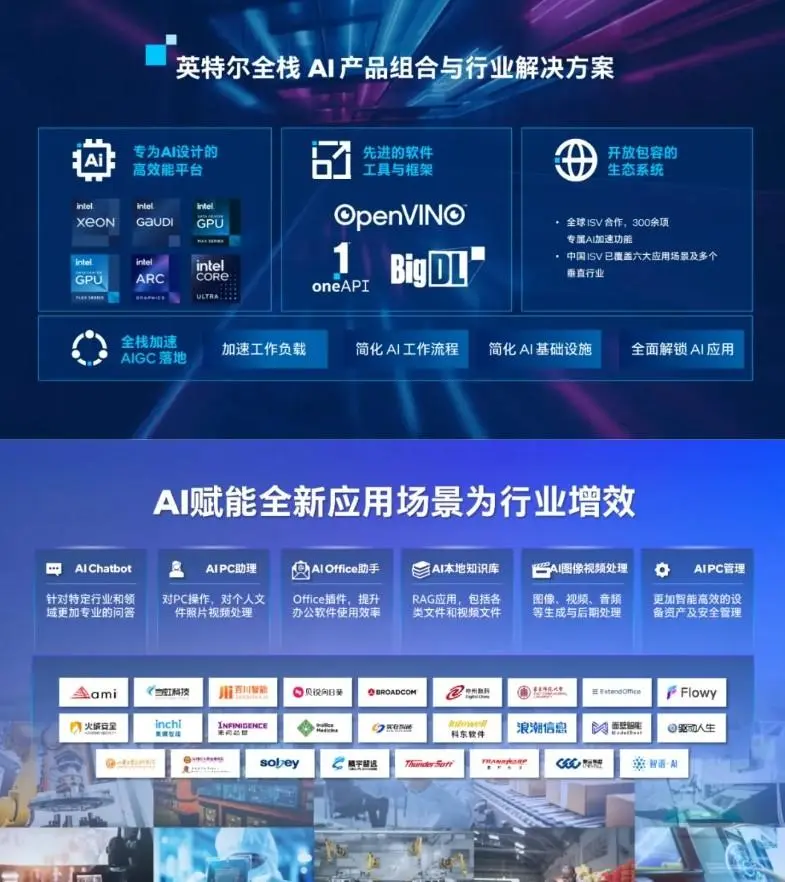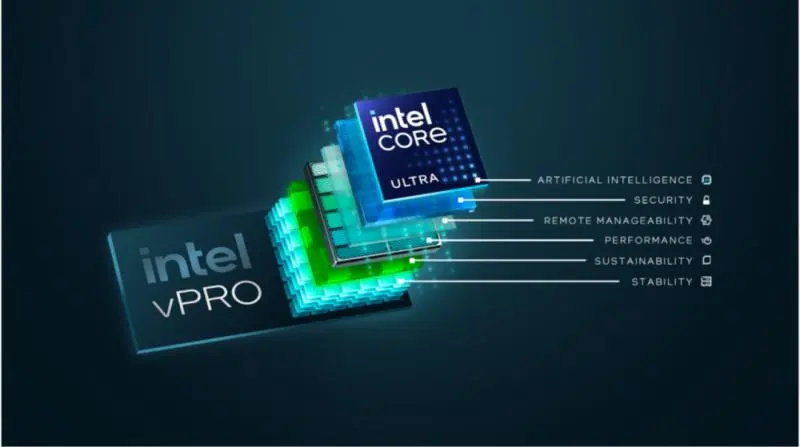In today’s fast-paced digital era, PCs have become indispensable tools in everyday work, with increasingly diverse and complex applications. The rise of AI PC has significantly enhanced PC capabilities, meeting the diverse work needs of users. AI-powered smart offices are gradually becoming a critical factor for small and medium-sized enterprises (SMEs) to enhance their competitiveness, offering unprecedented opportunities for businesses.
AI: A Critical Driver for SMEs
The Entrepreneurship Times report, “The Intelligent Development of SMEs in the AI Era,” highlights that beyond cost reduction and efficiency improvements, SMEs urgently seek AI technology for identifying potential business opportunities, enabling precise decision-making, improving customer experience, and driving industry innovation. Approximately 54.2% of core SME personnel believe AI will transform their company’s production and business processes, freeing employees from repetitive, simple tasks.
Despite their high expectations, SMEs have struggled to implement AI due to limitations such as data quality, computational power, and algorithmic capabilities. Building a smart office ecosystem requires close collaboration between hardware and software. AI PCs are anticipated to become the first mass-adopted AI terminal, with chipmakers like Intel providing critical technological support to accelerate this transition.

Intel’s Contributions to AI PC Development
To accelerate AI adoption in business settings, Intel recently partnered with over 10 OEMs and 35 domestic ISV partners, introducing six AI application scenarios for commercial AI PCs: AI Chatbots, AI PC Assistants, AI Office Assistants, AI Local Knowledge Bases, AI Image Processing, and AI PC Management. Intel also launched more than 300 AI-accelerated ISV features, providing comprehensive AI solutions for various industries. These applications address IT management, cost reduction, and productivity improvements, allowing SMEs to achieve digital transformation affordably and efficiently. This represents not only a new era for AI in business but also the advent of AI-powered smart offices.
The Six Key Scenarios for AI Smart Offices
1. AI Chatbots: With powerful learning capabilities, AI chatbots can quickly master professional knowledge, providing users with precise and timely responses. For example, Inspur Information’s AI PC, powered by Intel Core Ultra processors, supports the deployment of “YuanChat,” enabling seamless utilization of large language models for text creation, programming, math calculations, and logical reasoning. This offers a convenient, secure, and localized AI interaction experience.
2. AI PC Assistants: Designed for users unfamiliar with computer operations, AI PC Assistants simplify tasks like extending a second screen or troubleshooting common issues. Users can easily resolve problems by typing a query, eliminating the need for external help or lengthy online searches. This significantly lowers the barrier to entry for AI-enabled work environments.
3. AI Office Assistants: A quintessential scenario for SMEs, AI Office Assistants enhance productivity by integrating AI capabilities directly into tools like Office Suite plugins. For instance, Intel’s ISV partner Kutools has developed an AI-powered toolkit for Excel, enabling intelligent operations, custom formula generation, data analysis, and chart creation. This not only boosts efficiency but also ensures data privacy for businesses.
4. AI Local Knowledge Bases: These transform local content into learning systems, generating various test formats such as multiple-choice and Q&A to reinforce memory and improve learning efficiency. This application has vast potential in corporate training and educational institutions, offering personalized learning experiences tailored to individual needs.
5. AI Video and Image Processing: A popular application in generative AI, AI PCs assist media professionals with image generation, video editing, and 3D modeling. Intel’s ISV-developed Creator Launcher supports AI drawing creation powered by Intel Core Ultra graphics, significantly reducing the barriers to using AI in creative processes
6. AI PC Management: AI PCs can manage themselves by automating software updates, detecting security risks, and optimizing energy efficiency. For enterprise-level tasks, such as server management across regions and workloads, AI PCs offer IT administrators efficient data consolidation and actionable insights, easing their workload in risk analysis and management.

The Core Ultra Processor: Driving Force Behind AI PC
The success of these applications is underpinned by Intel’s Core Ultra processors, a monumental architectural breakthrough in 40 years. Featuring a CPU+GPU+NPU tri-engine design, these processors can locally run large language models (LLMs) with up to 20 billion parameters. The performance and efficiency cores deliver exceptional data throughput, achieving unprecedented levels of performance.
For video editing, Intel’s Arc integrated graphics double the performance and energy efficiency, drastically improving workflow speed. Additionally, the Intel 4 process technology and 3D high-performance hybrid architecture, combined with NPU support for sustained AI applications, offer exponential improvements in battery life, freeing users from carrying chargers during travel.
The Road Ahead
The Intel Core Ultra processor’s tri-engine system enhances AI smart office applications, while the Intel vPro platform further boosts productivity, security, manageability, and stability, simplifying IT management for enterprises.Generative AI on AI PCs signifies a major productivity leap, deeply influencing office efficiency for individuals and businesses alike. By tailoring large AI models to specialized user needs, AI PCs cater to diverse industries and roles.
However, challenges remain for AI PCs, particularly in local deployment. Intel and its partners must continue innovating to integrate ecosystem resources, enhance hardware performance, expand software applications, and strengthen security. With these efforts, Intel is poised to help more businesses embrace AI smart offices, unlocking creativity and productivity for their workforce.








